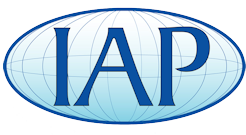from http://www.sgrlaw.com/resources/trust_the_leaders/leaders_issues/ttl12/873/ the website of a well-known intellectual property law firm.
What can be Copyrighted?
Almost anything can constitute copyrightable subject matter provided it is fixed in a tangible medium, which means you can see it, hear it, and/or touch it.
However, a copyright does not protect an idea—only the author's particular expression of that idea. For example, you cannot copyright the idea of a garden sculpture of a little girl sitting on a park bench wearing a floppy hat. But, once you have made a sculpture of a little girl sitting on a park bench wearing a floppy hat, your expression of that idea will be protected. This does not mean that others cannot make sculptures using the same idea—a girl on a park bench wearing a floppy hat. It does mean, however, that if they copy your expression or their work is substantially similar in the eyes of the ordinary observer, their work may be an infringement of your work.
In the United States, the owner of the copyright can register a work with the Copyright Office of the Library of Congress if they submit a properly completed application form, nonrefundable filing fee for each application (for current fees, please check the Copyright Office Web site here, and a nonrefundable deposit of the work being registered. The deposit requirements vary depending upon the nature of the work, but generally speaking, two complete copies are required.
The Copyright Act lists the types of authorship which are protected under the Act (17 U.S.C. § 102(a)).
What can be Copyrighted?
Almost anything can constitute copyrightable subject matter provided it is fixed in a tangible medium, which means you can see it, hear it, and/or touch it.
However, a copyright does not protect an idea—only the author's particular expression of that idea. For example, you cannot copyright the idea of a garden sculpture of a little girl sitting on a park bench wearing a floppy hat. But, once you have made a sculpture of a little girl sitting on a park bench wearing a floppy hat, your expression of that idea will be protected. This does not mean that others cannot make sculptures using the same idea—a girl on a park bench wearing a floppy hat. It does mean, however, that if they copy your expression or their work is substantially similar in the eyes of the ordinary observer, their work may be an infringement of your work.
In the United States, the owner of the copyright can register a work with the Copyright Office of the Library of Congress if they submit a properly completed application form, nonrefundable filing fee for each application (for current fees, please check the Copyright Office Web site here, and a nonrefundable deposit of the work being registered. The deposit requirements vary depending upon the nature of the work, but generally speaking, two complete copies are required.
The Copyright Act lists the types of authorship which are protected under the Act (17 U.S.C. § 102(a)).
- Literary Works. This category includes the obvious, such as books, newspaper articles, periodicals and manuscripts, and the not so obvious, such as catalogs, directories and computer programs (specifically recognized as copyrightable literary works by the Computer Software Copyright Act of 1990).
- Musical Works. This includes both the music and the lyrics of a song, although the lyrics alone could be separately copyrighted as a literary work.
- Dramatic Works. Dramatic works, by definition, portray a story or convey some type of theme through the use of dialogue or acting. Examples include theatrical plays, screenplays, works of musical theater and opera.
- Pantomime and Choreographic Works. These are dramatic presentations without words, principally dance, but the protection does not extend to social dance steps.
- Pictorial, Graphic and Sculpture Works. This category includes two-dimensional and three-dimensional works of fine, graphic and applied art, photographs, prints, art reproductions, maps, globes, charts, technical drawings, diagrams and models. Not so obvious examples are labels on products if they contain more than just trademarks or short phrases or lists of ingredients. Also included are advertisements, dress and fabric designs and popular art, which encompasses a broad range of decorative or novelty items from jewelry to cemetery monuments—however, the copyright protects only the esthetic, ornamental aspects of a work, not its functional aspects. For example, you cannot copyright a spoon, because it is a useful article. However, if you apply a unique design to the handle of a spoon, that design, as applied to a spoon, can be copyrighted.

